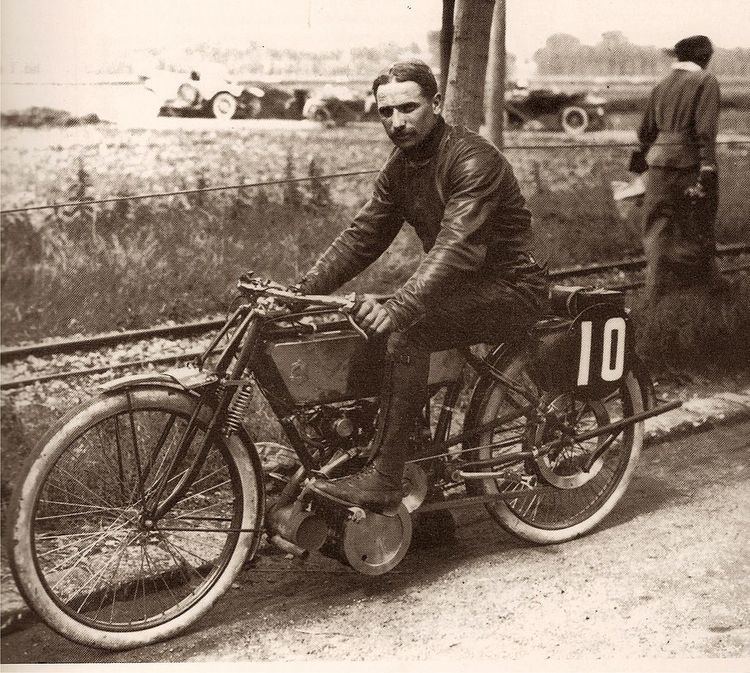Manufacturer Peugeot Bore / stroke 62 × 82 mm Power 15 hp (11 kW) | Production 1913–1914 Top speed c. 122 km/h (76 mph) | |
 | ||
Engine 495 cc Parallel twin, 4-valve per cylindergear-driven dual overhead cam | ||
The Peugeot 500 M (1913-1914) was a French racing motorcycle made by Peugeot. It was a "technical tour de force" as the first motorcycle with dual overhead camshaft and a multi-valve cylinder head, with four valves per cylinder.
Contents
Development and technology
The Swiss engineer Ernest Henry developed a four-cylinder head valve for a race bike, similar to the Peugeot four-cylinder racing engine (1912) from the automotive industry, with four valves and roof-shaped combustion chamber. The dual camshaft drive was driven by a cascade of gears as was later used by MV Agusta. The twin engine with four exhaust ports was technically ahead of its time. However, it suffered from thermal problems that were due to the "limit of the performance of the metallurgy of the time": the cylinder heads ripped between the valve sockets.
The secondary drive was achieved with primary drive chain to a single speed gearbox driving the rear wheel via belt. At the rear wheel the Peugeot had a pedal-operated drum brake. Front suspension was a girder fork.
Test drives
Peugeot proved the reliability of the motor bike in test runs conducted in 1913. The racing motorcycle reached a world record of 122.2 km/h (75.9 mph) over the flying kilometre for its displacement class. The company entered reliable and proven two-cylinder V-engines with simple valve actuation in the 1913 French motorcycle Grand Prix. The machine should have been finally entered in the 1914 French motorcycle Grand Prix, but was not due to the First World War. Further development was discontinued. In 1922 or 1923 the motor was revised with a single camshaft and two valves per cylinder for stability, producing a claimed 27 hp.
Later redesigns
Peugeot produced modified race machines designed after Henry's 1913–1914 DOHC, four-valve model. Major redesigns were executed by Marcel Grémillon in 1919 and by Lessman Antonesco in 1923. Variants included various combinations of SOHC, chain drive, dual-cradle frames, gas tanks mounted above the frame, dry clutch, kick start, three-speed transmission, and front brakes. The original Henry design is recognizable by its valvetrain gear drive mechanism between the two cylinders; later variants moved the drive to the side of the cylinders.
2010 reproduction
For the 100th anniversary of the model, an electronics engineer named Jean Boulicot built a reproduction between c. 2000 and 2010 from Henry's original blueprints, using a home lathe and milling machine.
The reproduction machine was displayed at Salon Rétromobile 2010.
